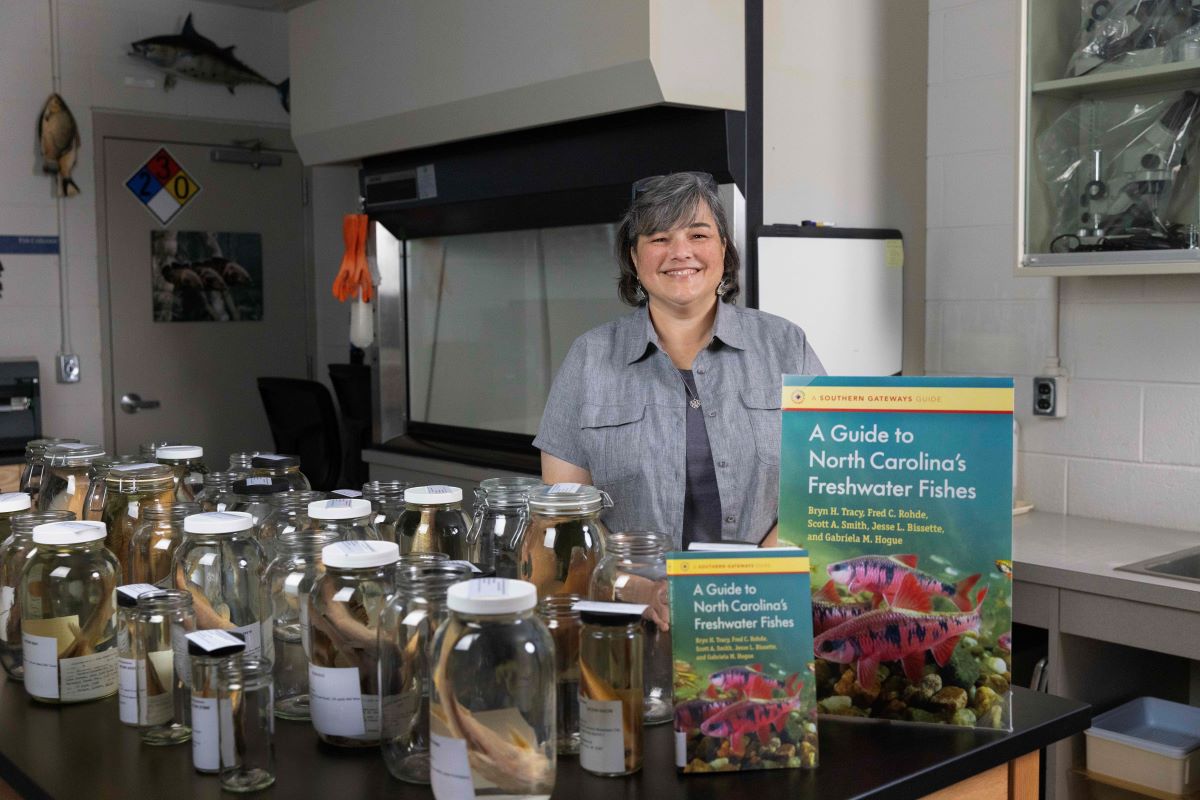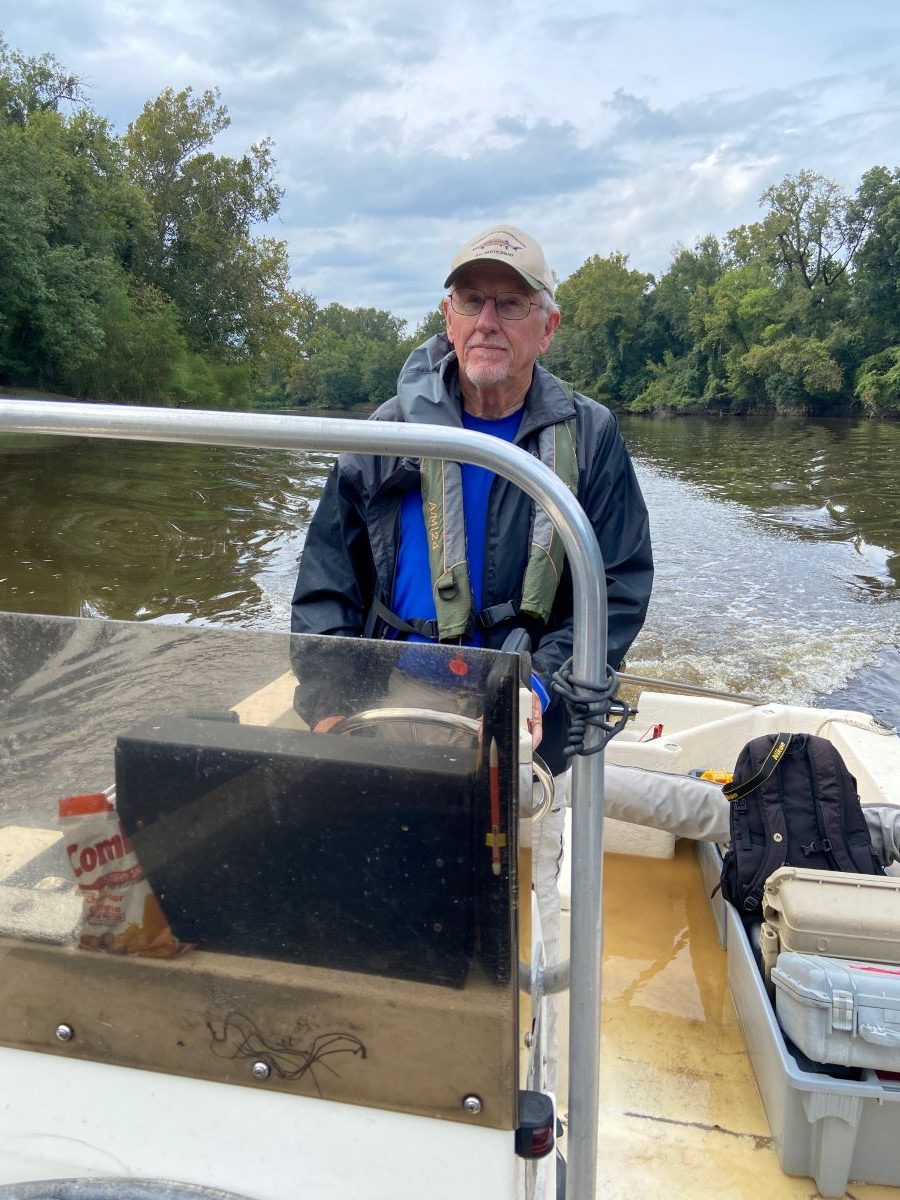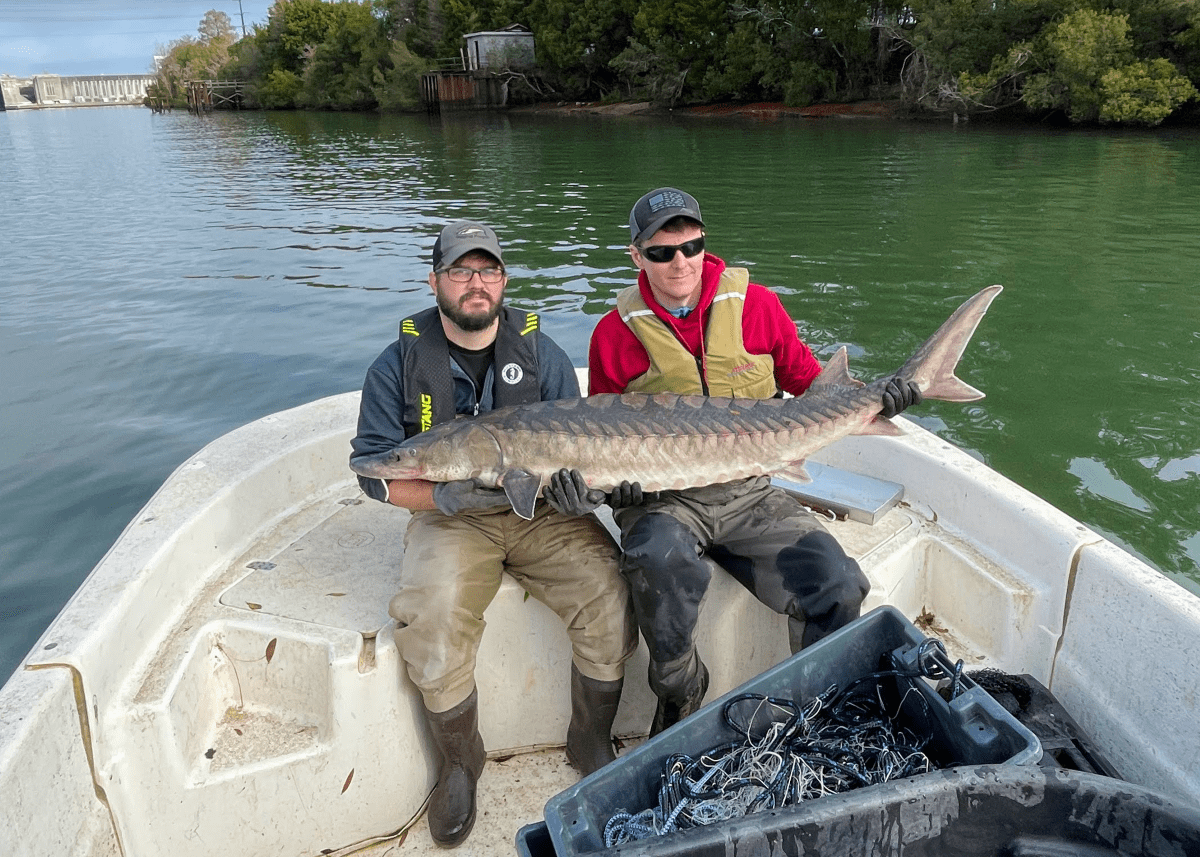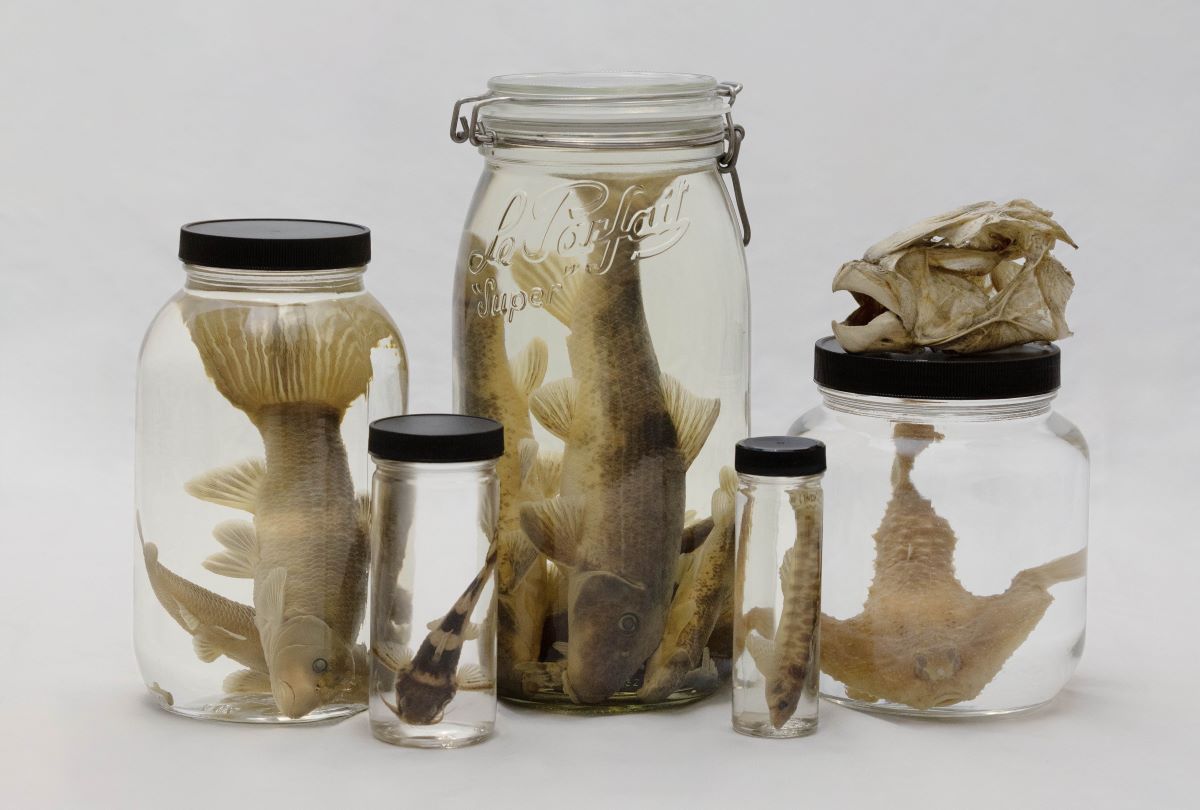
Of the more than 250 freshwater fish species in North Carolina, there’s a surprising amount that venture into marine and estuarine waters.
Which ones? That answer can be found in the 464-page “A Guide to North Carolina’s Freshwater Fishes,” published in March.
Supporter Spotlight
“From Wolf Creek, the westernmost community in Cherokee County, to the small Outer Banks town of Buxton in Dare County, North Carolina’s fresh waters are home to forty families of fishes: Thirty-one families whose species are primarily freshwater, five families whose species are primarily marine and estuarine, and four families whose species are almost evenly split between freshwater and marine,” the introduction begins.
The University Of North Carolina Press in Chapel Hill published the guide that is an update to the 1991 “The Freshwater Fishes of North Carolina” by Edward F. Menhinick.
Authors are North Carolina Museum of Natural Sciences Ichthyology Collections Manager Gabriela Hogue, museum adjunct researcher Bryn Tracy, Scott Smith and Jesse Bissette, both with North Carolina Division of Marine Fisheries, and Fred “Fritz” Rohde, a fisheries biologist at the National Oceanic and Atmospheric Administration Beaufort Lab.
Illustrated with 546 full-color images, the new guidebook has data on all freshwater fish families and 260 maps showing where to find them, the state’s ichthyological history, or study of fishes, a key to help identify fish, and an appendix that explains the meaning behind the scientific names. The paperback, $35, and the eBook, $9.99, can be purchased online from the publisher and in the museum’s gift shop.
The authors all expressed their commitment to educating the public about the often-misunderstood freshwater fish in all of North Carolina’s waters.
Supporter Spotlight
“This book is a culmination of my 50 years spent studying the freshwater fishes of our beautiful state,” Rohde told Coastal Review in an email response. “Unfortunately, too many people have no idea of the fish diversity that we have in the coastal area — it’s more than Largemouth Bass and ‘bream’ — and we hope that our book will enlighten them.”

The guidebook is to help people understand what’s in the state’s streams, see how beautiful the state’s fishes are, and then maybe “become an advocate to help conserve our waters,” Tracy said during a recent conversation with Hogue and Coastal Review.
Hogue agreed.
“We want people to be able to identify every fish where they’re at in the freshwaters of North Carolina, but also just fall in love with them,” Hogue said. “Most people think it’s just the marine fishes that are beautifully colored, that are intricate, that have weird features, and yes, they’re incredible, but we have incredible diversity and beauty, and strange, weird features and structures in our freshwaters too.”
Bissette and Smith explained in an email that this is a resource anglers and nature enthusiasts who frequent coastal areas can use to explore inland freshwater regions.
“Having a comprehensive guide to freshwater fishes can enhance their appreciation and knowledge of the diverse species they might encounter throughout North Carolina, including those freshwater fish that occasionally stray into brackish or coastal waters, such as Longnose Gar, and those saltwater fish that sometimes venture into freshwater, like Striped Mullet.”
Freshwater isn’t a misnomer for the fish families that spend time in waters with higher salinity.
“Fish don’t adhere to the boundaries we draw, often moving between ‘freshwater’ and ‘saltwater’ habitats. Many species also have life cycles in both freshwater and saltwater ecosystems,” Bissette and Smith continued.
For example, they said, an anadromous fish like striped bass and American shad spend the majority of their lives in saltwater but return to freshwater to spawn. Also, many rivers and streams flow into coastal areas, creating the estuarine environments those on the coast know and love.
“Understanding the freshwater species that contribute to these ecosystems helps to shed light on the broader ecological dynamics at play in coastal regions,” they said.

Tracy and Hogue both said they’ve spent decades studying fish.
Tracy took a few courses on ichthyology in the late 1970s while at University of Missouri-Columbia for undergrad and grad school. After graduating, he spent 13 years as an environmental biologist for a power company, then spent the rest of his career as an environmental specialist with North Carolina Department of Environmental Quality’s Division of Water Quality. He assessed the relationship between fish health and water quality until he retired in 2017.
Hogue, who has been at the museum since the late 1990s, said she’s always had a love for the water.
After a snorkeling trip with her father, which she called “just an incredible experience,” her interest in studying fish was piqued, but she never thought it was a career option. Unlike most of her classmates studying biology as undergrad at the University of Illinois, Champaign-Urbana, she did not want to go pre-med. She told her reasons to her academic adviser who encouraged her to find her passion, and she did while doing research at the Illinois Natural History Survey, which houses millions of specimens.
Once she finished graduate school there, she joined the North Carolina Wildlife Resources Commission staff to take aquatic inventories in state parks. Three years later in 1998, she moved to the natural sciences museum and has been there since.
Tracy said they first met to discuss the idea of a book in 2012, and began in earnest in 2020.
Tracy didn’t want to spend 10 years writing several-inch-thick tomes on fishes “that you could use as a doorstop,” so he, Hogue and Rohde wrote a short paper before publishing “An Annotated Atlas of the Freshwater Fishes of North Carolina” in October 2020, he said.
The roughly 200-page PDF had been downloaded more than 4,400 times as of last week and is available to anyone at no charge.
When the atlas was made available, Hogue said that almost immediately they were asked when the book would be coming out. As the number of downloads increased, so did the decision to “dive in and do this.”
They used data from the 2020 atlas and the Fishes of North Carolina project, which began in 2013 to identify all of the state’s known freshwater and marine fishes, to update the 1991 freshwater fish guide. Both the atlas and Fishes of North Carolina website are companions to the new guide.

A lot has changed since that early 1990s edition. There are new species, new distributions and even new names. “Even though this book was great in its heyday,” it was time for an update, Tracy explained.
Hogue explained that they had a few goals with the book, chiefly, making it accessible both financially and for all audiences.
“We didn’t want to just write a book for ichthyologists, or students who are hoping to be ichthyologists. We wanted to make it for anybody that wants to know more about fish,” Hogue said.
Hogue said that science doesn’t always seem accessible and she feels scientists need to just “take off that white lab coat” and dispel the belief that “we’re all geniuses because we’re scientists. No, I’m just a regular person that loves fish.”
Also, in terms of accessibility, Hogue was adamant the guide includes a photo glossary explaining how to use a dichotomous key and a glossary. A dichotomous key is a sequence of paired statements that help the user identify a species.
“In North Carolina, we are so lucky that we have these ecoregions,” Hogue continued. “We’ve got the mountains, we’ve got the Piedmont, we’ve got the coast, we’ve got the sandhills, and so that also creates incredible diversity in the habitats of these species, and that’s why I think we have such a rich diversity.”
The Wildlife Resources Commission published the 1991 guide, and Hogue approached the state agency for help with the update. The commission came through, providing a $15,000 grant that helped keep the book cost relatively low. The project also received a $950 photography grant to travel the state for better images from the North Carolina Chapter of the American Fisheries Society.
The hope is to make downloads of a chapter or the entire book available at no charge. “But we haven’t gotten to that level yet,” Tracy added. “We’re not in it for the money.”
Hogue said the “incredible research collection” that she manages at North Carolina Museum of Natural Sciences helped with data for the book.

The collection of about 1.4 million specimens focuses on southeastern United States because it is “such a hotspot for biodiversity.”
The museum’s sizable collection, most of which is available on a globally accessible database, is made up of smaller collections museums, researchers, universities and others donated for a variety of reasons. Either the institution didn’t have the funds any more to maintain a collection, or the department moved in a different direction, Hogue said.
When the museum was founded, the intent was to showcase what is in North Carolina, “but it’s not like a fish knows a geopolitical boundary,” so that focus has widened, she said. In addition to the Southeast, 67 are countries represented in the collection.








